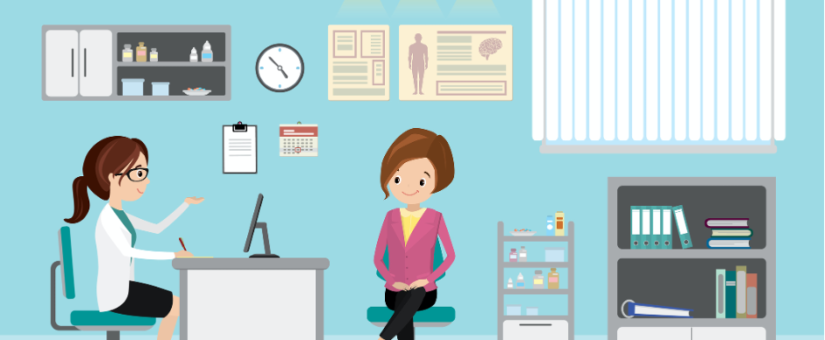
Setting Up for Success Part One: The Consulting Room
When setting up any workspace, function and aesthetic appeal are paramount considerations. In this two-part post, we will touch on the key areas you need to consider when setting up your practice.
In Part One will look at setting up for success in your consulting room.
In PART Two we will talk about how to set up for success in your treatment room.
THE CONSULTING ROOM
This is the workspace that Doctors will spend most of their time in and the space that invites patients to open up, trust and develop therapeutic relationships. Patient experience is a key indicator in practice performance and patient overall satisfaction. The experience in your practice translates to feedback that can improve patient retention and generate new business. Time is money and optimising each consultation is imperative. The time spent considering your consulting room is one of the best investments you can make in your business.

The consulting room should be a private space created as an extension of your practice. It should be a welcome and relaxed environment that provides multiple functions.
Things to consider when setting up consult rooms:
- The first consideration should be the available lighting. Natural lighting will always be best, but this can be hard to achieve while still maintaining privacy. Optimising this where possible will help bring a calm and welcome ambience to the room. Ensure the lighting is adequate but not harsh or clinical. An effective lamp for procedures will be necessary where procedures will be performed in the room. Light colours on the walls and ceiling will help in creating a light space but consider a warm white to avoid a harsh clinical and sterile environment.
- Consider what procedures will need to be performed in the consulting room and relevant equipment required. Cervical screening? Sexual health checks? Vaccinations? Simple wound dressings? Skin biopsy? What equipment needs to be on hand to ensure uninterrupted continuity of care?
- Storage for all the required stock and equipment. When installing a bed, consider having storage built underneath to store bedsheets, waste bags, speculums, swab kits etc. Having cupboards built in close to wash basins to keep essential infection control items on hand will significantly enhance access and ensure compliance to your infection control policy. Consider placement of the gloves close to your wash facilities for easy access and sharps bins secured to a wall will help reduce risks.
- Consider the time it takes to search for equipment that is not at hand exactly when you need it. Having items at your reach will ensure that consultation time is optimised which translates to a more efficient consultation and utilisation of the allotted time in your diary. Patients will appreciate this and reflect positively on the consultation. Your billing hours will reflect true time in consultation rather than wasted time spent locating essential items.
- Documentation and education should be readily available. Where this is not built into your software systems, consider a wall mounted or shelf option that will allow you to have these at your fingertips.
- Privacy needs to be considered in consult and in procedures. Setting up your room to ensure that consulting and documentation space is private, will allow patients to prepare for procedures and feel safe and secure. Consider a ceiling mounted screening curtain or, alternatively, a floor standing privacy screen if this is not an option.
- Give thought to the personal touches. Whether it be a photo; a plant; or achievements on the wall, these personal elements can go a long way in creating a space that is both pleasant to work in and fosters mutuality. . A study entitled “Whole-person care in general practice: The doctor-patient relationship” refers to this element of mutuality as an important component to the doctor-patient relationship suggesting that creating rapport, trust and positive therapeutic relationships require sharing small parts of you and your personality. Patients are more likely to open up and share more when the doctor-patient relationship foundation is strong.
- Achieving and maintaining optimal stock levels. This will depend on a number of factors and ultimately requires a level of flexibility and ongoing assessment. Implementing an effective stock rotation and auditing process with supporting documentation will help maintain consistency and ensure equipment is in good order and not expired or damaged. Documentation of stock rotations and audits will give you the tools you need to ensure staff are all on the same page and is ready to review when assessing quality management in accreditation.
Talk to Practice Partners about how we can help you to get your consulting room set up and keep it well stocked, efficient and help you in optimising every consult and patient experience.
- Posted by admin-se
- On July 27, 2021
- 0 Comments




